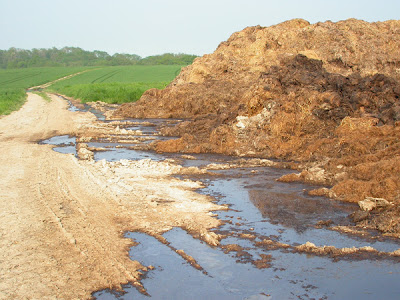 |
| Grime on Lisbon stone - arguably including sulphur dioxide deposits |
On Thursday I came across a fascinating article in Science Daily (see link below) about the possibility that the use of potassium fertilisers in flower-beds on top of a Belgrade fortress had contributed to a dark crust on the limestone of the structure itself. Previously this effect has been thought to be more to do with the effects of sulphur dioxide pollution from coal-based industry and heating activities. It is also an effect that occurs widely in the UK and the rest of the world and this research gives much-needed pause for thought on the very use of high levels of fertiliser in horticulture and also in agriculture. It ties in with other effects on biodiversity and landscape that I have noticed in myriad locations.
This blog post is more complicated than some, so instead of weaving the point through the text as I often do, this time I am being very up-front about what it is about:
Economics – why use more than is absolutely necessary, surely having it leach away is throwing money literally down the drain?
Aesthetics – why make what we want to look good look anything but?
Practical common sense – why use too much and at the wrong time for it to benefit the intended recipient?
 |
| Guano buildup in Chile is a key source of fertiliser |
In Belgrade high levels of potassium have been found in the soil under the flower beds above the fortress described in the article. This ties in with the results of the analysis of the dark crusts and raises many questions for monuments and stonework in polluted areas across the world. It is particularly an issue for parks managers that such high levels of fertiliser are managing to leach into the soil before being taken up by the plants for which they are intended. The rapid throughput means that valuable resources are not being used efficiently, which has a direct relationship to the costs.
This effect is also similar to a strange obsession with some grassland specifications, particularly roadside verges. There are appropriate places for ‘improved’ ie highly fertilised grassland. Roadside verges in countryside areas are seldom the correct place. The ideal roadside grass is poorly nourished and this will allow wild meadow flowers to become established and give a very healthy look to the grass, which would need cutting a couple of times a year to inhibit the growth of scrub. Many road scheme specifications are heavy on the nutrient-rich topsoil, apparently because ‘that is what you do’. As a consequence nitrogen loving plants such as dock get established and nitrogen fixers such as clover. They outcompete the more delicate plants and the verge rapidly turns into a ragged and unhappy-looking area. Insects are not benefited, drivers are not benefited, pedestrians are not benefited. Maintenance costs ought to be higher to battle the inappropriate growth – but often are not, and it all gets sadly astray from the idyllic intentions of the designer.
 |
| Irish field with ivy-clad church |
The effects on the landscape of the use of more fertiliser than is needed by the plants for which it was intended are often visible in woodland and scrub areas abutting the improved pasture grassland in livestock farming. A previous blog post (Flatulence and Biodiversity) was on the subject of the value to the digestive system of livestock through a varied diet. This post is dealing with effects that can strangle the ecosystem. The photograph shows a typical field in Ireland. It could be anywhere that has intensive dairy farming, the effects are very similar. The ivy-clad lump in the middle of the field is a ruined church, with no obvious surrounding graveyard. The hedgerow is also ivy-clad. All over the countryside entire telegraph poles are also festooned in layer upon layer of ivy, they look like tree pillars. For the ivy to be as viable as it is, with little other vegetation having any chance to survive, something is obviously very much awry.
In studies in Norfolk and in Devon, ammonia from agricultural sources has been shown to have a detrimental effect upon the development and diversity of lichen species, in particular on twigs which are new growth and have no bark history to complicate the picture. This effect is in addition to the fact that lichens will not grow on the surfaces darkened by dense ivy growth in any case.
 |
| All manner of fluids can end up in ground water |
In desert areas, where water is at a premiuim, it has been discovered that small quantities of water, in a form of drip-feed, contribute to improved yields. A similar approach for fertiliser is beneficial, and with good levels of organic content as well, the plants could have a chance to get at the nutrients before they sink below their roots....
Wolseley, PA, et al (2006), ‘Detecting changes in epiphytic lichen communities at sites affected by atmospheric ammonia from agricultural sources’ The Lichenologist 38, pp 161-176.
Science Daily article: Heritage Site Under Attack by Flowers

It has been pointed out that by mistake in an earlier version of this post I referred to dock as a nitrogen-fixer, which is inaccurate. I have altered the text to amend this error, dock is a nitrogen loving plant and is used as a dynamic accumulator of minerals in some places due to its long and strong root system. It does not have the mix of symbiotic relationships with bacteria that true nitrogen-fixing plants do.
ReplyDelete